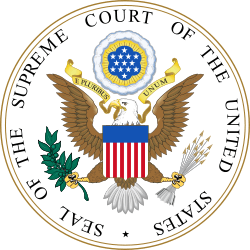Harris v. Arizona Independent Redistricting Commission
| Harris v. Arizona Independent Redistricting Commission | |||||||
|---|---|---|---|---|---|---|---|
|
| |||||||
| Decided April 26, 2016 | |||||||
| Full case name | Wesley W. Harrisl, et al., appellants v. Arizona Independent Redistricting Commission, et al. | ||||||
| Docket nos. | 14-232 | ||||||
| Citations | |||||||
| Argument | Oral argument | ||||||
| Holding | |||||||
| Population deviations for legislative districts predominantly reflected commission's good-faith efforts to comply with Voting Rights Act and obtain preclearance from Department of Justice. United States District Court for Arizona affirmed. | |||||||
| Court membership | |||||||
| |||||||
| Case opinions | |||||||
| Majority | Breyer, joined by Roberts, Kennedy, Ginsburg, Sotomayor, Kagan, Thomas, Alito | ||||||
| Laws applied | |||||||
| U.S. Const., Amdt. XIV | |||||||
Harris v. Arizona Independent Redistricting Commission, 578 U.S. ___ (2016), was a United States Supreme Court case in which the Court held that the one person, one vote principle under the Equal Protection Clause of the Fourteenth Amendment allows a state's redistricting commission slight variances in drawing of legislative districts provided that the variance does not exceed 10 percent.[1]
See also
- Evenwel v. Abbott
- Reynolds v. Sims — a United States Supreme Court case that ruled that state legislature districts had to be roughly equal in population.
- Scotusblog
References
This article is issued from Wikipedia - version of the 11/25/2016. The text is available under the Creative Commons Attribution/Share Alike but additional terms may apply for the media files.
